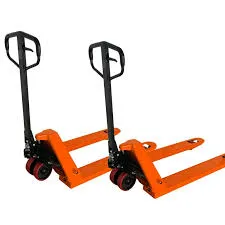


Understanding Crane Scales A Deep Dive into 3-Ton Capacities
Crane scales have emerged as indispensable tools in various industries, including construction, logistics, and manufacturing. These devices are specifically designed to measure the weight of heavy loads suspended from a crane or hoist, facilitating safe and accurate lifting operations. Among the different capacities available, the 3-ton crane scale has gained particular attention due to its versatility and applicability in a wide range of scenarios.
What is a Crane Scale?
At its core, a crane scale is a type of hanging scale designed to measure the weight of suspended objects. Typically equipped with a hook at the top and a digital display, these scales use advanced load cell technology to provide precise weight measurements. The scale is connected to a crane’s hook, allowing users to lift objects safely while simultaneously determining their weight. This is crucial in preventing overloading, which can lead to equipment failure, accidents, and workplace injuries.
Why Choose a 3-Ton Crane Scale?
A 3-ton crane scale effectively meets the needs of businesses that frequently handle loads up to 6,000 pounds (approximately 2,722 kilograms). This capacity is ideal for a variety of applications, ranging from shipping and receiving large packages to lifting heavy machinery during maintenance and repair processes. The versatility of a 3-ton crane scale makes it suitable for small to medium-sized warehouse operations, construction sites, and industrial environments.
With a 3-ton capacity, operators can manage multiple everyday lifting tasks, allowing for operational flexibility and reducing the need for multiple scales with varying capacities. Additionally, the compact and portable nature of most 3-ton crane scales ensures that they can be easily transported and used in different locations, making them an ideal choice for businesses with varying operational needs.
Features of a 3-Ton Crane Scale
Modern 3-ton crane scales come equipped with a host of features designed to enhance user experience and improve accuracy.

1. Digital Display Most models feature a clear digital display that indicates the weight of the load in real-time. This reduces the chances of human error associated with reading mechanical dials.
2. Wireless Capabilities Some advanced crane scales offer wireless connectivity, allowing operators to monitor weight from a distance via a smartphone or tablet application. This feature enhances safety by enabling users to stay clear of heavy lifting operations.
3. Memory Function Many scales come with a memory function that allows operators to store previous readings, making it easier to track weight over time or manage multiple loads in one go.
4. Durability Given the environments in which they operate, 3-ton crane scales are typically designed to be rugged and resistant to shock, vibrations, and other potentially damaging conditions.
5. Calibration Frequent calibration ensures that the scale maintains its accuracy over time. High-quality models often come with easy calibration procedures to ensure consistent performance.
Safety Considerations
While 3-ton crane scales provide vital benefits, safety should always be prioritized. Operators should undergo proper training to understand how to use the scale correctly and to comply with industry standards for lifting operations. Regular maintenance and inspection of the crane scale are imperative, as any wear and tear can compromise accuracy and safety.
Conclusion
In summary, a 3-ton crane scale serves as a critical asset for industries that deal with heavy lifting. Its accuracy, portability, and advanced features combine to create an effective solution for weighing large loads. As technology continues to evolve, these devices will undoubtedly become even more efficient, reinforcing their role in promoting safety and efficiency across various sectors. Choosing the right crane scale is essential, and understanding its features and benefits can lead to more productive and secure lifting operations.



